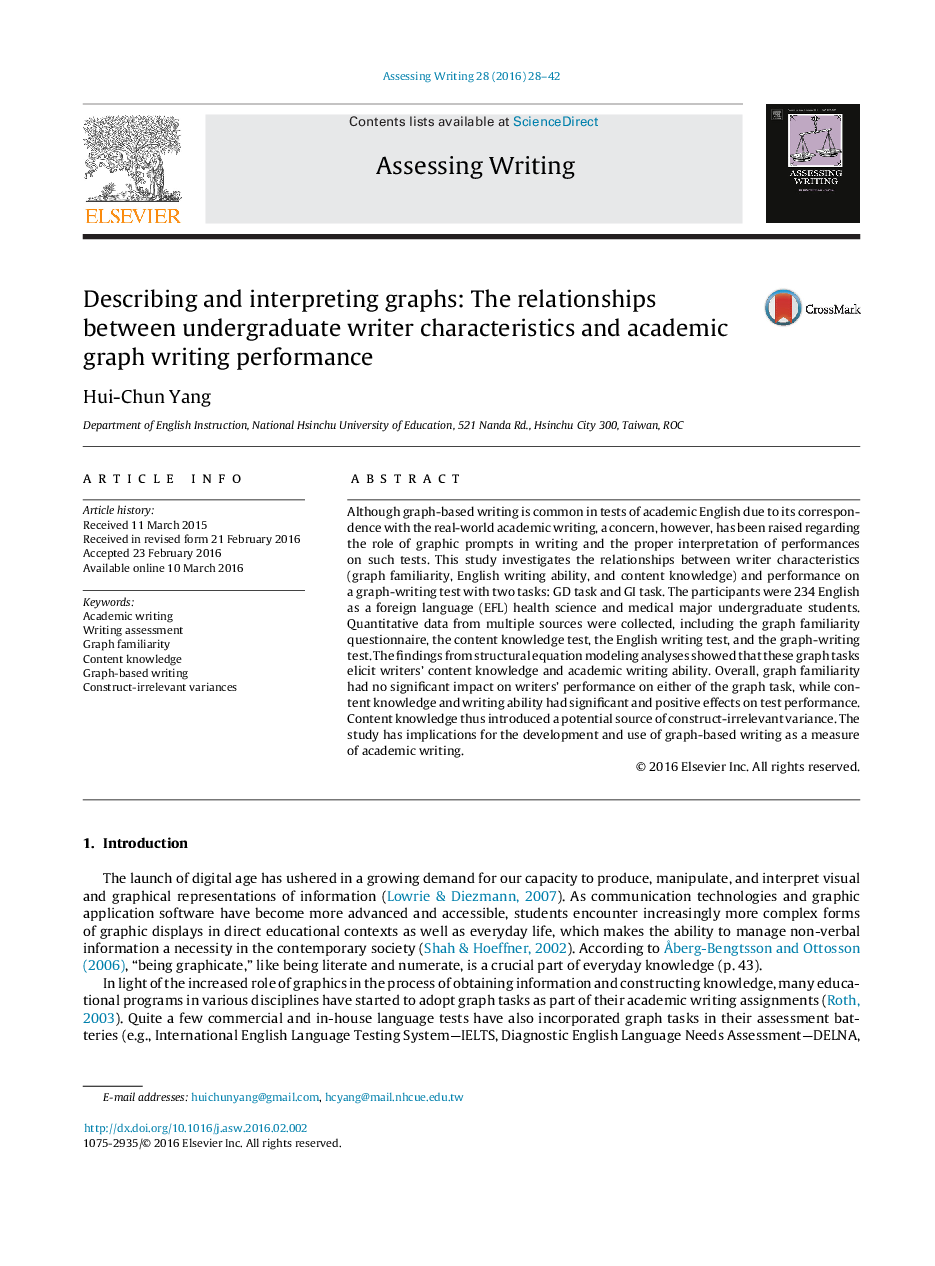| Article ID | Journal | Published Year | Pages | File Type |
|---|---|---|---|---|
| 344213 | Assessing Writing | 2016 | 15 Pages |
•Graph tasks elicited L2 writers’ academic writing ability.•Graph familiarity had no significant impact on graph writing performance.•Content knowledge introduced a potential source of construct-irrelevant variance.
Although graph-based writing is common in tests of academic English due to its correspondence with the real-world academic writing, a concern, however, has been raised regarding the role of graphic prompts in writing and the proper interpretation of performances on such tests. This study investigates the relationships between writer characteristics (graph familiarity, English writing ability, and content knowledge) and performance on a graph-writing test with two tasks: GD task and GI task. The participants were 234 English as a foreign language (EFL) health science and medical major undergraduate students. Quantitative data from multiple sources were collected, including the graph familiarity questionnaire, the content knowledge test, the English writing test, and the graph-writing test. The findings from structural equation modeling analyses showed that these graph tasks elicit writers’ content knowledge and academic writing ability. Overall, graph familiarity had no significant impact on writers’ performance on either of the graph task, while content knowledge and writing ability had significant and positive effects on test performance. Content knowledge thus introduced a potential source of construct-irrelevant variance. The study has implications for the development and use of graph-based writing as a measure of academic writing.
